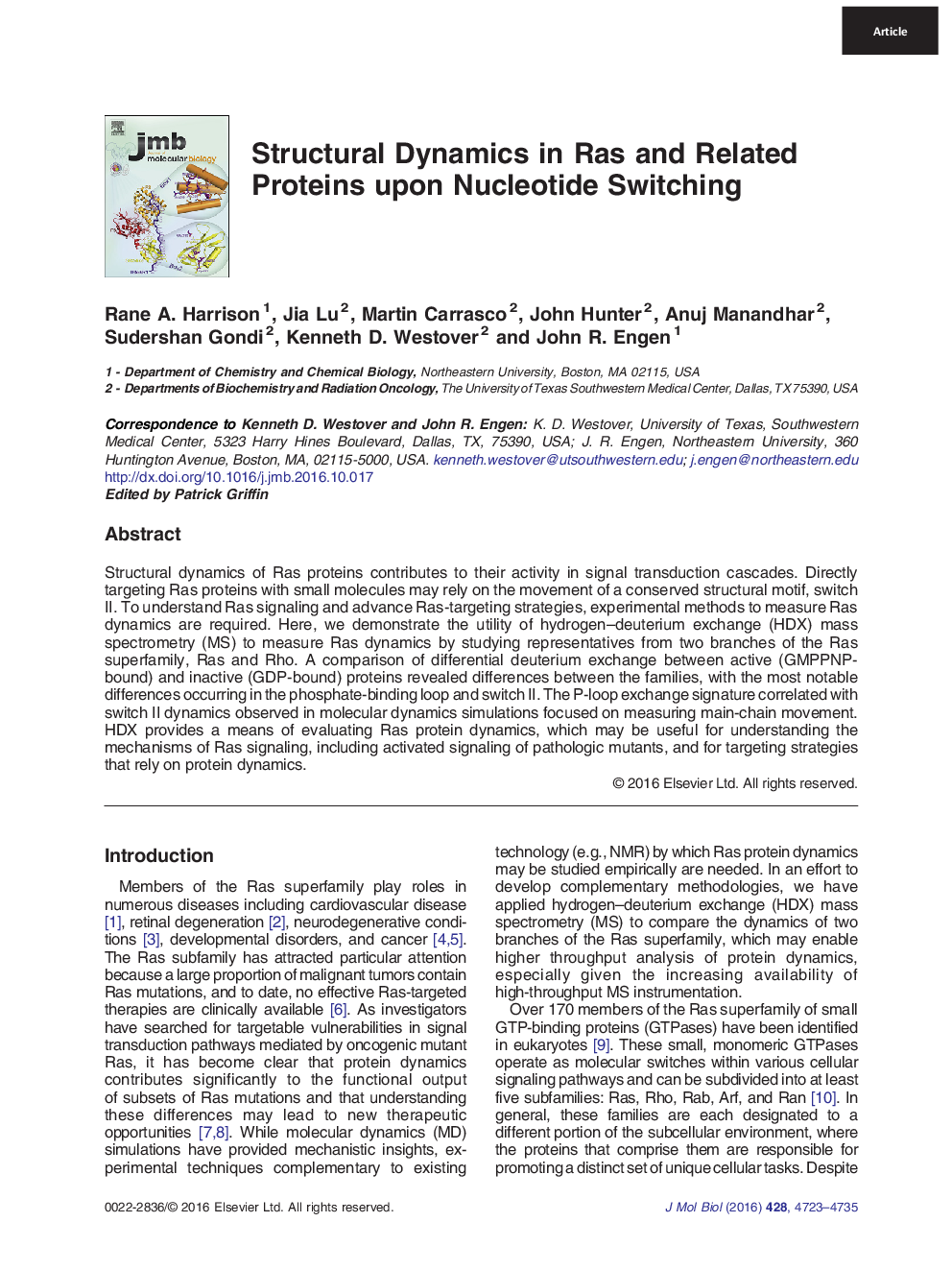| Article ID | Journal | Published Year | Pages | File Type |
|---|---|---|---|---|
| 5533362 | Journal of Molecular Biology | 2016 | 13 Pages |
â¢HDX MS and molecular dynamics simulations of K-Ras, H-Ras, N-Ras, R-Ras, Rap1B, CDC42, Rac1, and RhoAâ¢Ras subfamily member HDX MS is distinct from Rho subfamily member HDX MS.â¢Dynamics and primary/tertiary structure conservation do not correlate.â¢We identified a subfamily-dependent correlation between switch II and P-loop.
Structural dynamics of Ras proteins contributes to their activity in signal transduction cascades. Directly targeting Ras proteins with small molecules may rely on the movement of a conserved structural motif, switch II. To understand Ras signaling and advance Ras-targeting strategies, experimental methods to measure Ras dynamics are required. Here, we demonstrate the utility of hydrogen-deuterium exchange (HDX) mass spectrometry (MS) to measure Ras dynamics by studying representatives from two branches of the Ras superfamily, Ras and Rho. A comparison of differential deuterium exchange between active (GMPPNP-bound) and inactive (GDP-bound) proteins revealed differences between the families, with the most notable differences occurring in the phosphate-binding loop and switch II. The P-loop exchange signature correlated with switch II dynamics observed in molecular dynamics simulations focused on measuring main-chain movement. HDX provides a means of evaluating Ras protein dynamics, which may be useful for understanding the mechanisms of Ras signaling, including activated signaling of pathologic mutants, and for targeting strategies that rely on protein dynamics.
Graphical AbstractDownload high-res image (247KB)Download full-size image
